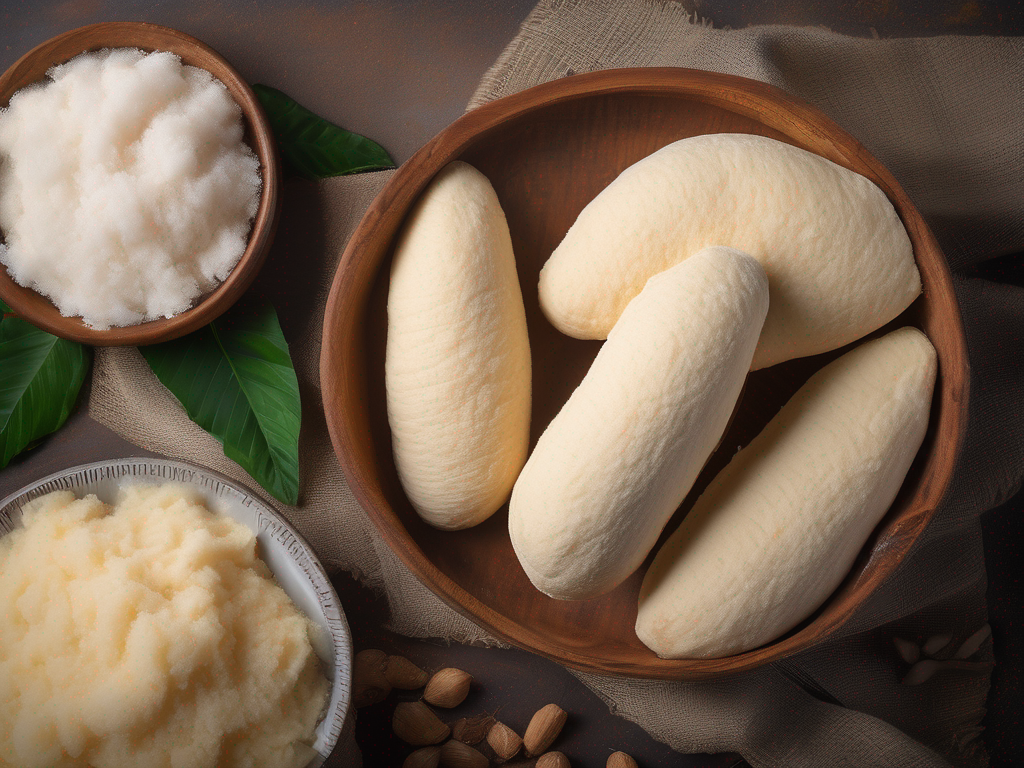
Preserving Fufu: How to Extend the Shelf Life of West African Cassava Dough
Get Your Free Food Safety Cheat Sheet
30 most common foods with instant answers. Print it and stick it on your fridge—completely free!
Preserving Fufu: How to Extend the Shelf Life of West African Cassava Dough
If you enjoy West African cuisine, you're likely familiar with the delicious staple known as fufu West African cassava dough. Fufu is a versatile food made from cassava, and it's a popular choice in many West African countries. However, fufu has a relatively short shelf life, so knowing how to preserve it properly is essential to avoid waste and enjoy this traditional dish for an extended period. In this blog post, we will discuss some effective methods to help you preserve fufu for longer without compromising its taste and quality. (Fufu west african cassava dough)
Understanding Fufu and Its Shelf Life
Before we delve into preservation methods, it's important to understand what fufu is and why it has a limited shelf life. Fufu is a starchy dough made from cassava, yam, plantains, or a combination of these ingredients. It is typically prepared by pounding the cooked starchy ingredients into a smooth, elastic dough that can be served with soups, stews, or sauces.
Due to its high moisture content and lack of preservatives, fufu is prone to spoilage if not stored properly. When exposed to air and moisture, fufu can become moldy or develop an off-flavor, rendering it unsafe for consumption. To prevent spoilage and extend the shelf life of fufu, proper storage techniques are crucial.
Tips for Preserving Fufu West African Cassava Dough
1. Store Fufu in an Airtight Container
- H3: Transfer the fufu into an airtight container immediately after preparation to prevent exposure to air and moisture.
- H3: Make sure the container is clean and dry before storing the fufu to avoid contamination.
2. Refrigerate Fufu for Short-Term Storage
- H3: If you plan to consume the fufu within a few days, store it in the refrigerator to maintain its freshness.
- H3: Place the airtight container of fufu in the refrigerator at a temperature below 40°F (4°C) to slow down bacterial growth.
3. Freeze Fufu for Long-Term Storage
- H3: For extended storage, consider freezing the fufu to preserve its texture and flavor.
- H3: Divide the fufu into smaller portions before freezing to make it easier to thaw and use only what you need.
4. Thawing and Reheating Fufu
- H3: When ready to eat, thaw the frozen fufu in the refrigerator overnight or at room temperature for a few hours.
- H3: To reheat the fufu, steam it in a pot with a little water or microwave it in short intervals to prevent it from becoming too mushy.
5. Safety Precautions for Handling Fufu
- H3: Always wash your hands thoroughly before handling fufu to prevent contamination.
- H3: Avoid leaving fufu at room temperature for an extended period to minimize the risk of bacterial growth.
Conclusion
Preserving fufu West African cassava dough for an extended period is possible with the right storage techniques. By storing fufu in an airtight container, refrigerating it for short-term use, and freezing it for long-term storage, you can enjoy this traditional dish without compromising its quality. Remember to follow safety precautions when handling fufu to ensure its freshness and safety. With these tips in mind, you can savor the flavors of West African cuisine for days to come.
Whether you're a fan of fufu or looking to explore new culinary delights, mastering the art of fufu preservation will elevate your dining experience and allow you to enjoy this beloved dish at your convenience. So, go ahead, stock up on fufu, and savor the rich flavors of West African cuisine whenever the craving strikes! (Fufu west african cassava dough)
Authoritative Food Safety References
These agencies and university labs inform every tip and health precaution we publish.
USDA FoodKeeper – Cold Storage Guidelines
Official refrigerator, freezer, and pantry timelines maintained by the U.S. Department of Agriculture.
Visit USDA FoodKeeperFDA Produce Safety Rule & Grower Guidance
Field-to-fridge handling practices that prevent contamination of fruits, vegetables, and leafy greens.
Visit FDA Produce SafetyCDC Foodborne Illness Prevention Hub
Surveillance-backed guidance on pathogens, symptoms, and steps to reduce foodborne illness risk.
Visit CDC Food SafetyUC Davis Postharvest Technology Center
University research detailing optimal storage atmospheres for produce after harvest.
Visit UC Davis PostharvestPenn State Extension – Home Food Preservation & Safety
Peer-reviewed extension bulletins on safe canning, chilling, and reheating practices.
Visit Penn State ExtensionGet Your Free Food Safety Cheat Sheet
30 most common foods with instant answers. Print it and stick it on your fridge—completely free! Want more? Upgrade to the complete guide with 70+ foods.
Scan your food directly and get instant safety info using our AI-powered camera feature.